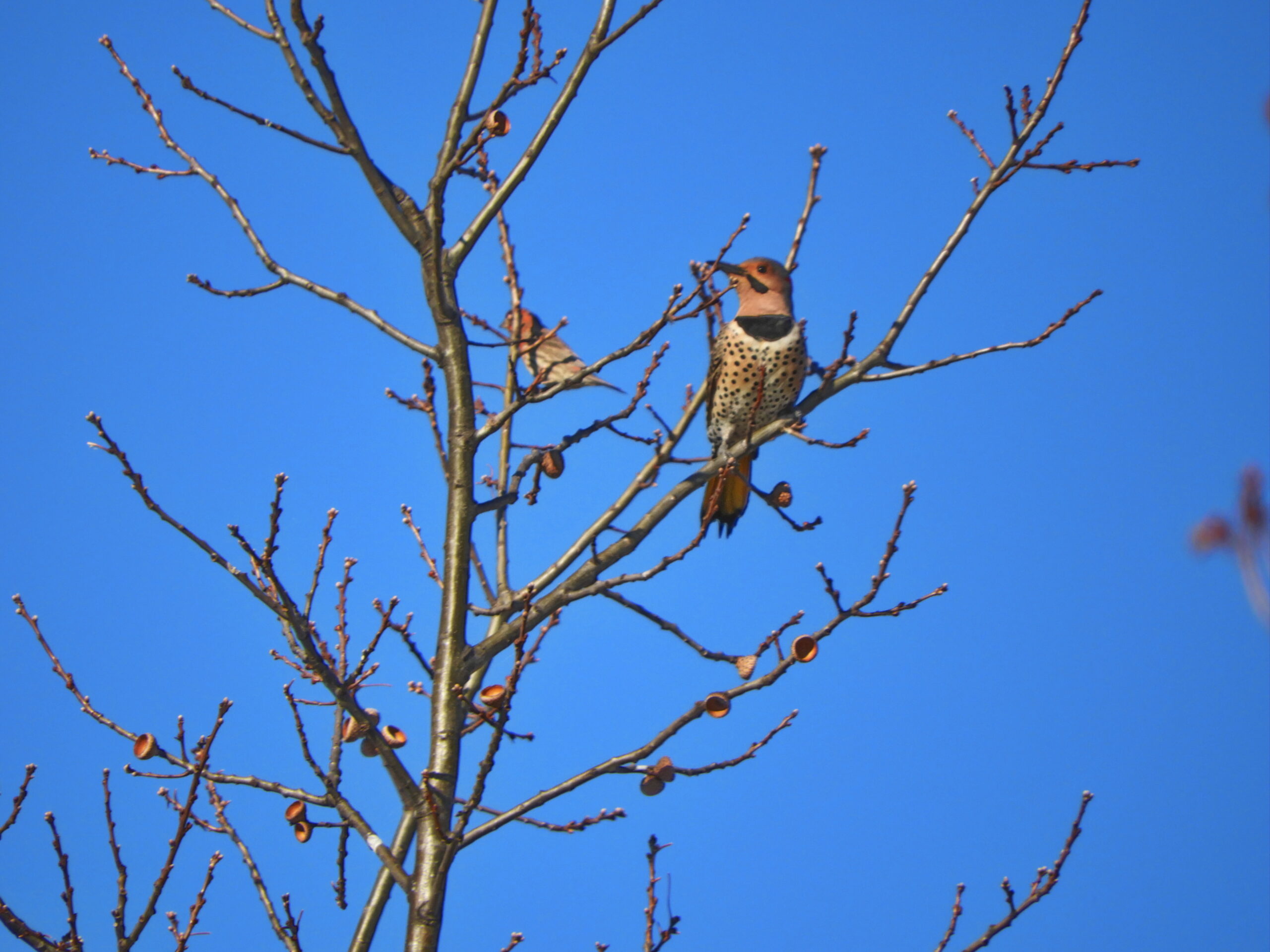Libby Hill contains several ecosystems that support great opportunities for bird watching. Bird watchers have spotted over 136 species of birds. With easy access and lots of bird varieties, the trails area ideal for new and experienced birders.
Hotspot
eBird sites – Cornell University’s eBird is the universal data collection area for birds worldwide. Libby Hill Trails has an area identified as an official hotspot: Libby Hill Forest Trails . If you are an active or new birder, we’d encourage you to submit your bird data and learn about the species already documented at the sites above.
School Fields – The large fields surrounding the school have a buffer of under story shrubs between the open spaces and the more mature forest uphill from the school. Walk the periphery of these ball fields and take the Turkey Trot or Lynx trails to get to the witch hazel and alder areas that have a wide variety of birds from spring to fall. Killdeers are frequently in the fields in summer as are several sparrows (white throated, chipping, and savannah) that surround the shrubs around the school. Robins and occasional cardinals also frequent the border trees to the field. Northern flickers have been known to nest in the group of trees near the grooming shed.

Pond by Middle School – The pond is best accessed from the school ball field or Turkey Trot trail. There are several spots where you can go to the edge of the pond and have a natural “bird blind” to observe waterfowl, woodpeckers, and a few songbirds that nest in the shrubs on the shore. Also look for turtles on the dead logs and the beaver house and dam. You will also notice that a second smaller pond is formed near the trailer park. This new wetland often has ducks and warblers when water levels are high.
Spring thaws the ice early on this pond and several types of ducks can be seen from late March to mid-April including hooded mergansers, common mergansers, and ring-necked ducks. Mallards inhabit the water all season, sometimes in flocks of thirty or more.
In summer, a few herons will be feeding here on most days along with an occasional egret. Palm and Yellow Rumped warblers often stop by for a couple of weeks in May/June and are most often seen in the trees by the water’s edge. Kingfishers reside all summer and quite often a pair of kestrels will be perched on the dead snags in the pond. Later in the summer when water levels drop, several sandpipers (solitary, spotted, and least) are often seen on the exposed sand bars in the middle of the pond. Bald eagles that nest in nearby Range Pond often patrol over the pond looking for ducks in summer. Broad winged and red-tailed hawks also frequently fly overhead.
Fall brings migration birds with September having wide varieties of species. Canadian geese always frequent the pond but in fall transient flocks of three hundred or more geese can be seen. Watching them que up for landing is an amazing site.
Full list of birds seen at the Pond at the Middle School are on eBird.
Distance from parking lot – 10 minutes.
Turkey Trot Trail Pond to Back of Middle School – This upper half of the trail has the usual white and red nuthatches, titmouse, and chickadees but also you will hear prairie warblers and eastern towhees in the new growth just over the border in the gravel pit.
Distance from parking lot – 10 minutes

Cell tower and top of Hill- Immature young pine in the under story of older trees provides a wide variety of birds year-round. In winter chickadees, nuthatches, goldfinches, woodpeckers, and titmouse frequently follow trail users in this area. In spring and early summer, several warblers are commonly heard and seen. In summer, the high tops of pine trees here host green and black throated warblers
Distance from parking lot – 10 minutes.
Thayer Brook – Take the Harold Libbey Trail which crosses a tributary of Thayer brook twice. These wetland sections often have thrushes, creepers, and other woodland birds. Cooper/sharp shinned hawks frequent the deep woods and are often seen buzzing close overhead.
Distance from parking lot via Lynx > Harold Libbey Trails – 30 min.
Thayer Brook Marsh – The Thayer marsh has many interesting species including great blue herons, green herons, merlin, blue headed vireos, ducks, red eyed vireos, flycatchers, and many more. Please try to not disturb any nesting birds while visiting the marsh area.
Distance from Parking Lot via Lynx > Harold Libbey > Outback trails – 45 minutes














